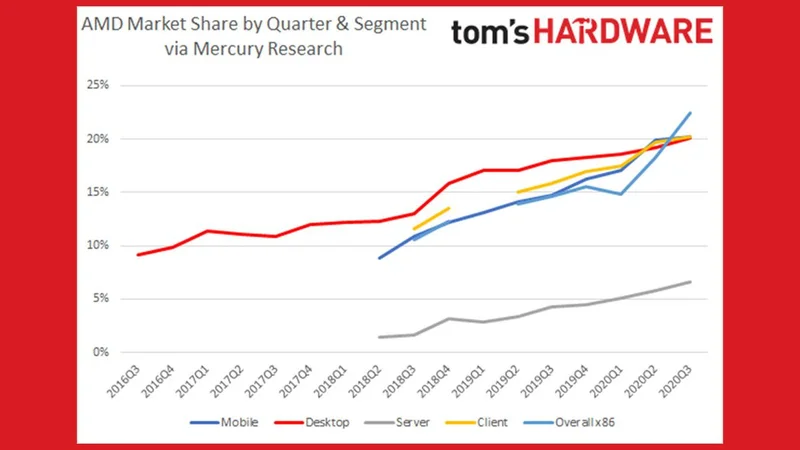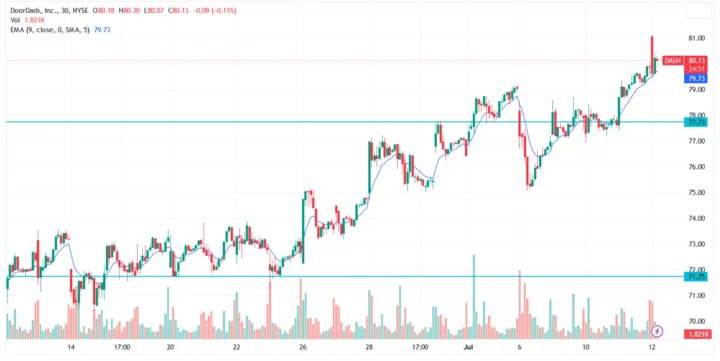AMD's 58% Rally: Analyzing the Data vs. the Market Hype
The numbers flicker across the screen in an almost hypnotic shade of green. For anyone holding Advanced Micro Devices (AMD) stock, the past month has been a dopamine rush. As of October 27, the ticker closed at $252.92. The stock is up over 100%—to be more exact, 109.7% year-to-date. In the last 30 days alone, it has rocketed up by 58.6%, a fact highlighted in reports like Can AMD’s Rally Continue After a 58.6% Surge in the Past Month?.
This isn't just a rally; it's a vertical ascent. The narrative fueling this climb is intoxicatingly simple and powerful: AI. AMD is positioned as a critical arms dealer in the artificial intelligence revolution, supplying the high-performance silicon that powers the modern world's computational ambitions. With new hardware launches and major partnerships with cloud giants, the company has captured the market's imagination. The prevailing sentiment online isn't just bullish; it's euphoric.
But in my experience, euphoria is the most dangerous emotion in finance. It clouds judgment and papers over inconvenient data points. And when you look past the stunning percentage gains and dig into the underlying financial models, a stark discrepancy emerges. The story the market is telling and the story the numbers are telling are two very different things. The question isn't whether AMD is a good company. The question is whether its stock price has become untethered from reality.
The Gravity of Valuation
Let’s set aside the market noise for a moment and run a simple, unemotional exercise: a Discounted Cash Flow (DCF) analysis. The model, which attempts to value a company based on its projected future cash flows, is a foundational tool for a reason. It anchors a stock's price to its ability to generate actual, spendable money. When I ran the numbers for AMD, based on a reported Free Cash Flow of $4.1 billion, the model produced a fair value estimate of $165.73 per share.
Let that sink in. The market price is $252.92. The model suggests a fair value of $165.73. This isn't a minor gap; it's a chasm. The stock is currently trading at a 52.6% premium to its intrinsic value, at least according to this standard methodology. Further corroborating this, on Simply Wall St's broader valuation checks—which use six different common methods—AMD only passes two of them.
This is the part of the analysis that I find genuinely puzzling. The market isn't just ignoring this valuation gap; it's actively betting against it. It’s like watching a high-performance race car. The DCF value is the engine, the fundamental power plant. The stock price is the speedometer. Right now, the speedometer is reading 250 mph, but the engine's telemetry suggests it should be doing 165. Is the engine about to unlock a secret, unprecedented level of power, or is the speedometer simply broken?

The bullish argument, of course, is that the engine is indeed about to be supercharged. Projections forecast that AMD’s free cash flow could surge to an incredible $18.7 billion by 2029. If—and it’s a colossal "if"—the company can achieve that, then today's price begins to look more reasonable. But this requires a near-flawless execution and a straight-line trajectory in one of the most competitive and volatile sectors on the planet. Are investors pricing in perfection? What happens if that growth is merely excellent instead of miraculous?
A Market High on Narrative
What we're witnessing is a classic battle between narrative and numbers. The narrative is that AI is a tidal wave, and AMD is one of the few companies selling the surfboards. It's a compelling story, and in the short term, the story always wins. Momentum traders, algorithm-driven funds, and retail investors swept up in the excitement are all piling in, creating a self-reinforcing cycle where a rising price begets more buying.
This momentum is a powerful force. But it’s not an anchor. It’s more like helium. It can lift things to incredible heights, but it provides no structural support. The structural support is the cash flow, the earnings, the fundamental value. Right now, AMD's stock is a balloon that has slipped its tether. It’s floating high on the warm air of AI optimism, and it might continue to drift higher.
The problem is that balloons are fragile. They are susceptible to sharp objects (like a competitor's surprise innovation) or a simple change in atmospheric pressure (like a shift in investor sentiment or a macroeconomic downturn). When you buy a stock at a 50%+ premium to its calculated fair value, you aren't investing in the company's current performance. You are making a highly speculative bet on its perfect, uninterrupted future performance five years from now.
So, where does the truth lie? Is the DCF model, a tool honed over decades, simply inadequate for valuing a company at the center of a technological paradigm shift? Or is the market, in its infinite but often manic wisdom, in the grip of a speculative fever? We lack the complete data to say for certain which forecast is correct, but the risk asymmetry is glaring. The potential for disappointment seems far greater than the potential for an upside surprise that isn't already priced in.
A Bet Against Arithmetic
Ultimately, buying AMD at $252 a share isn't an investment in a semiconductor company. It's a bet against arithmetic. It's a wager that the old rules of valuation no longer apply and that a compelling narrative can permanently suspend financial gravity. The company itself is a titan of innovation, and its role in the future of computing is undeniable. But a great company and a great stock are not the same thing. The price you pay determines your return, and the price today demands a future so flawless that it leaves absolutely no room for error. That’s not an investment I’m willing to make.
Related Articles
Merrill Lynch's Wealth Playbook: Asset Growth vs. Refined Strategy
Title: Merrill Lynch's "Wealth" Redefinition: Is It Dilution or Democratization? The bull isn’t char...
DoorDash Stock Sinking: Missed Earnings and Tech Spending Scare – What Reddit is Saying
DoorDash's Delivery Robot Dreams: More Like a Wall Street Nightmare? Alright, let's get this straigh...
Arm Stock: Bullish Forecast? Yeah, Right.
Generated Title: Arm's AI Forecast: Or Just More Silicon Valley Hype? Okay, Arm's giving us the ol'...
Outback Steakhouse Closing Restaurants: What Happened and Why?
Outback's Turnaround Plan: More Like a Slow-Motion Train Wreck Alright, so Outback Steakhouse is clo...
Federal Reserve News: Rate Cut Speculation vs. Supervisory Rating Changes
Fed's Mixed Signals: Is a December Rate Cut Really on the Table? Stephen Miran's call for further ra...
Pinterest's Stock Drop: What Happened and the Future of Visual Discovery
Okay, folks, buckle up. Because what's happening over at Pinterest isn’t just a quarterly earnings r...





